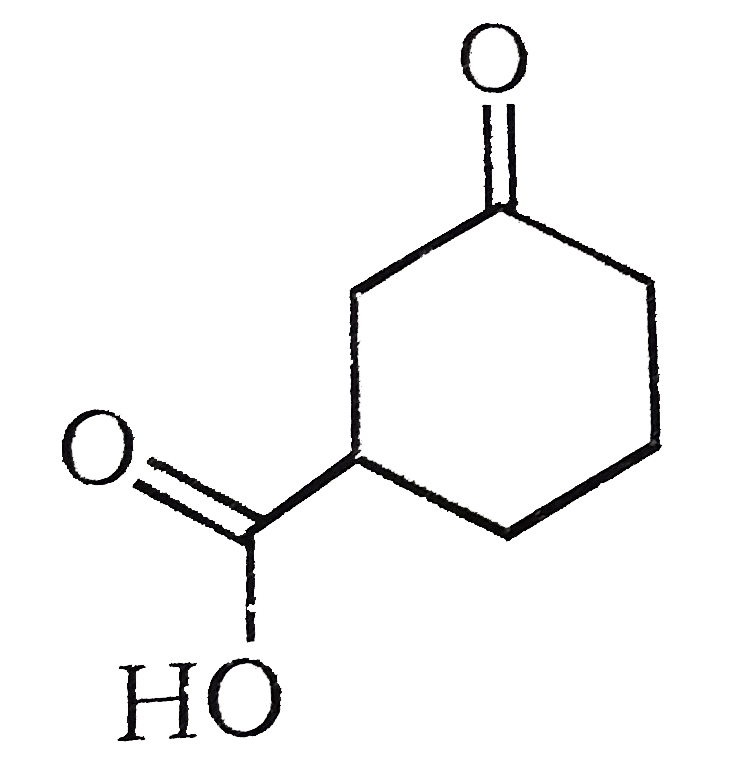Propene is the product obtained by dehydration of
2-propanol
1-propanol
Propanal
n-propyl alcohol
The correct Answer is:A
To determine the alcohol that, upon dehydration, yields propene, we need to analyze the dehydration process and the structure of propene.
1. Identify the Structure of Propene:
- Propene is an alkene with the molecular formula C3H6. Its structure can be represented as CH2=CH-CH3.
2. Understand Dehydration:
- Dehydration is the process of removing water (H2O) from an alcohol to form an alkene. This typically occurs in the presence of an acid catalyst.
3. Identify Possible Alcohols:
- The alcohols that can be dehydrated to form propene include:
- 1-Propanol (n-propanol)
- 2-Propanol (isopropanol)
4. Dehydration of 1-Propanol:
- When 1-Propanol (CH3-CH2-CH2OH) undergoes dehydration, it forms propene (CH2=CH-CH3) through the elimination of water. However, this is not the most favorable pathway since it would lead to the formation of a primary carbocation, which is less stable.
5. Dehydration of 2-Propanol:
- When 2-Propanol (CH3-CHOH-CH3) is dehydrated, it forms propene. The dehydration mechanism involves the formation of a more stable secondary carbocation, followed by the elimination of a β-hydrogen to yield propene.
6. Conclusion:
- The dehydration of 2-Propanol is the most straightforward route to produce propene. Thus, the correct answer to the question is that propene is obtained by the dehydration of 2-Propanol.
Final Answer:
Propene is the product obtained by the dehydration of 2-Propanol (isopropanol).
---
- Propene is an alkene with the molecular formula C3H6. Its structure can be represented as CH2=CH-CH3.
- Dehydration is the process of removing water (H2O) from an alcohol to form an alkene. This typically occurs in the presence of an acid catalyst.
- The alcohols that can be dehydrated to form propene include:
- 1-Propanol (n-propanol)
- 2-Propanol (isopropanol)
- When 1-Propanol (CH3-CH2-CH2OH) undergoes dehydration, it forms propene (CH2=CH-CH3) through the elimination of water. However, this is not the most favorable pathway since it would lead to the formation of a primary carbocation, which is less stable.
- When 2-Propanol (CH3-CHOH-CH3) is dehydrated, it forms propene. The dehydration mechanism involves the formation of a more stable secondary carbocation, followed by the elimination of a β-hydrogen to yield propene.
- The dehydration of 2-Propanol is the most straightforward route to produce propene. Thus, the correct answer to the question is that propene is obtained by the dehydration of 2-Propanol.
Propene is the product obtained by the dehydration of 2-Propanol (isopropanol).
Topper's Solved these Questions
- ALCOHOL, PHENOL AND ETHERBook:ERRORLESS Chapter:ALCOHOL, PHENOL AND ETHERExercise:Ordinary thinking (Ojective questions) Uses of Alcohol, Phenol and Ethers
Explore 20 Videos
- ALCOHOL, PHENOL AND ETHERBook:ERRORLESS Chapter:ALCOHOL, PHENOL AND ETHERExercise:Critical Thinking (Objective Questions)
Explore 17 Videos
- ALCOHOL, PHENOL AND ETHERBook:ERRORLESS Chapter:ALCOHOL, PHENOL AND ETHERExercise:Ordinary thinking (Ojective questions) Preparation of Alcohol, Phenol and Ethers
Explore 46 Videos
- ALDEHYDES AND KETONES Book:ERRORLESS Chapter:ALDEHYDES AND KETONES Exercise:JEE Section (JEE (Advanced) 2018) Numeric answer type question
Explore 1 Video
Similar Questions
Knowledge Check
Propene is not the product obtained by dehydration of :
A2-PropanolB1-propanolCPropanalDn-propyl alcohol
The product obtained isA B
B C
C D
D
 The product obtained is :A
The product obtained is :A B
B C
C DNone of these
DNone of these


 products obtained are:
products obtained are:



